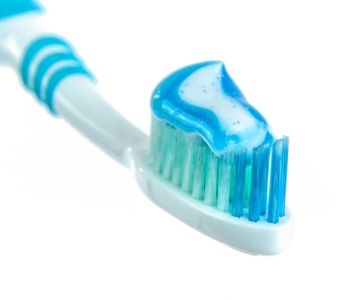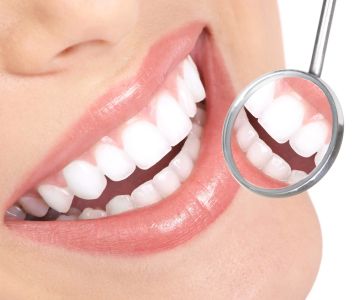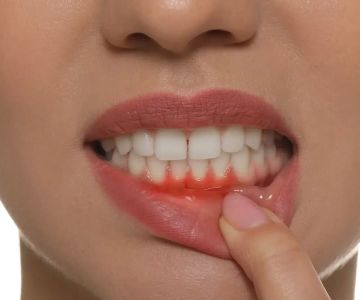Treatment Options for Gum Disease
Gum disease treatment comes in both nonsurgical and surgical forms, depending on multiple factors. Nonsurgical treatments like dental prophylaxis, scaling and root planing, antibiotic therapy, and laser periodontal therapy are suitable for early-stage gum disease. Surgical options such as pocket reduction surgery, bone grafting, gum grafting, and guided tissue regeneration are needed for moderate to advanced cases. A periodontist is often the expert to carry out these procedures.
Risks and Benefits of Gum Disease Treatment
The benefits of treating gum disease far outweigh the risks. Prompt treatment can eliminate bacteria, stop bone loss, improve bad breath, have healthier gums, and reduce the risk of various health conditions. Success rates are high, but they vary based on factors like the type of procedure and post-treatment care. Complications may include bleeding, infection, pain, teeth sensitivity, and gum recession.
Recovery and Outlook
The recovery time after gum disease treatment depends on the type of treatment received. For nonsurgical procedures like scaling and root planing, there's no downtime. Surgical procedures for advanced gum disease require one to four weeks of recovery. Good post-treatment oral hygiene is crucial. Long-term oral hygiene involves brushing, flossing, using mouthwash, and regular dental visits.
When to Call the Doctor
After gum disease treatment, contact your periodontist immediately if you experience severe pain that doesn't go away, pain that worsens after three or four days, fever, or infection at the treatment site.
Additional Details
A periodontist is typically the provider for treating periodontal disease, but general dentists may handle mild cases. Mouthwash can be helpful, but choose the right type. Hydrogen peroxide can be used diluted. Gum disease isn't curable but manageable with professional help. Laser treatment has its pros and cons.
Periodontal Disease Overview
Periodontal disease, or gum disease, is an inflammation and infection of the gums and the bone that supports the teeth. It can be caused by poor hygiene or genetic factors. There are four stages of gum disease: gingivitis, mild periodontitis, moderate periodontitis, and advanced periodontitis. Symptoms include reddish or purplish gums, bleeding, soreness, bad breath, pain when chewing, gum recession, and loose teeth. Risk factors include smoking, poor oral hygiene, diabetes, autoimmune diseases, hormonal changes, stress, genetics, and heart disease. The bacteria causing gum disease can be passed on, but not through brief casual contact.
Diagnosis and Tests
Dentists diagnose periodontal disease during routine examinations by looking for plaque buildup and asking about symptoms. They may measure the pockets around the teeth with a periodontal probe, check the bite, tooth looseness, and gum recession. Dental X-rays are also taken to show bone loss.
Management and Treatment
Gum disease isn't curable but manageable. Early-stage gingivitis can be reversed with proper oral hygiene. Treatments include routine dental cleaning for very early disease, scaling and root planing for mild gum disease, and pocket reduction surgery, bone grafting, gum grafting, guided tissue regeneration, or LANAP for moderate to advanced cases. Platelet-rich fibrin and plasma can also be used to speed up healing.
Prevention
In most cases, gum disease can be prevented with consistent and proper oral hygiene. To lower the risk, brush teeth two to three times a day, floss daily, use antibacterial mouthwash, avoid smoking, and visit the dentist regularly for cleanings and exams.
Outlook and Prognosis
Periodontal disease isn't life-threatening but can lead to other health conditions. It's manageable with proper treatment, and early detection and treatment are crucial for better oral health.
In conclusion, gum infections caused by plaque buildup require professional treatment and proper oral hygiene for effective management. Understanding the various treatment options, potential risks and benefits, recovery process, and preventive measures is essential for maintaining good gum health. Early intervention and consistent care can prevent the progression of gum disease and minimize its impact on overall health. Remember, a healthy mouth leads to a healthier life.






 Westgate Dental Arts
Westgate Dental Arts Coventry Family Dental
Coventry Family Dental Familia Dental
Familia Dental Dr. Daniel S. Fife, DDS
Dr. Daniel S. Fife, DDS Dentistry At Suburban Square: Michael I. Wollock, DMD
Dentistry At Suburban Square: Michael I. Wollock, DMD Comfort Care Dental
Comfort Care Dental The Importance of Oral Health Education During Pregnancy for a Healthy Pregnancy
The Importance of Oral Health Education During Pregnancy for a Healthy Pregnancy Why Skipping Dental Checkups Can Lead to Bigger Oral Health Problems
Why Skipping Dental Checkups Can Lead to Bigger Oral Health Problems Advantages of Porcelain Dental Restorations
Advantages of Porcelain Dental Restorations Best Tips for Brushing Your Teeth Properly for Healthy Gums: Essential Techniques for Oral Health
Best Tips for Brushing Your Teeth Properly for Healthy Gums: Essential Techniques for Oral Health How Can Diabetes Cause Tooth and Gum Problems? Preventing and Managing Oral Health Issues
How Can Diabetes Cause Tooth and Gum Problems? Preventing and Managing Oral Health Issues Healthy Habits for Promoting Good Oral Health and Hygiene: Tips for a Healthy Smile
Healthy Habits for Promoting Good Oral Health and Hygiene: Tips for a Healthy Smile